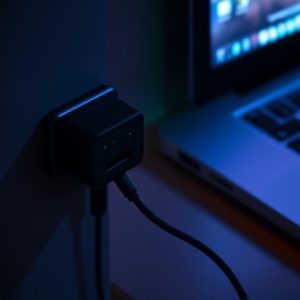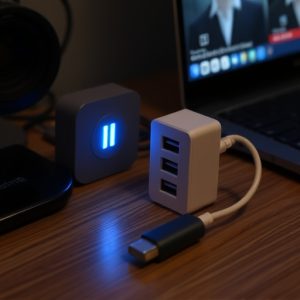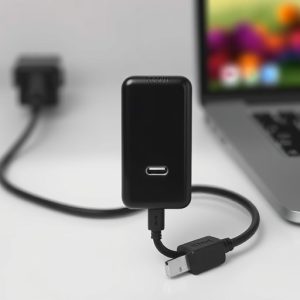Exploring the USB Charger Hidden Camera: Usage, Mechanics, and Legal Insights
The USB charger hidden camera is a sophisticated surveillance tool designed to look like an ordinar…….
The USB charger hidden camera is a sophisticated surveillance tool designed to look like an ordinary charging device, making it ideal for covert monitoring in various environments such as homes, offices, hotels, and rental properties. These cameras offer high-definition video capabilities and can be used discreetly without drawing attention, ensuring continuous operation with power management technology. They support remote access, allowing users to live stream footage, receive motion-activated alerts, and store data using cloud services or SD cards. The device features a rechargeable battery, a standard USB port for charging and data transfer, and a hidden camera lens with LED lights that mimic normal charging activity. It's crucial for users to be aware of the legal and ethical implications of using such devices, as privacy laws vary by jurisdiction and unauthorized recording can lead to serious legal consequences. Users must operate these cameras within the confines of the law and with respect for individual privacy rights to avoid breaching ethical conduct. The USB charger hidden camera combines functionality with subtlety, making it a valuable tool for enhancing security while respecting privacy.
USB spy gadgets, particularly hidden cameras within seemingly ordinary USB chargers, have emerged as a fascinating blend of technology and surveillance. This article delves into the intricate world of these devices, exploring their capabilities, practical applications, and the critical legal and ethical considerations they entail. From understanding how a USB charger hidden camera operates to assessing its impact on privacy and security, readers will gain a comprehensive perspective on this cutting-edge spy gadget.
Unveiling the USB Charger Hidden Camera: A Closer Look at Its Capabilities and Uses
The USB charger hidden camera is a sophisticated surveillance tool that cleverly masquerades as an everyday charging device. This covert gadget, often indistinguishable from legitimate chargers, offers users the ability to discreetly monitor environments for security or investigative purposes. Its compact form factor allows for unobtrusive placement in various settings, from homes and offices to hotels and rental properties. The camera within is typically equipped with high-definition recording capabilities, capturing clear visuals suitable for a range of applications, including personal safety, theft prevention, and compliance monitoring.
The integration of advanced imaging sensors and efficient power management technology enables the USB charger hidden camera to operate without raising suspicion. It can be plugged in alongside other devices, blending into the background while it records. Users benefit from remote access features, which allow for real-time viewing, motion detection alerts, and data storage options via cloud services or local memory cards. The versatility of this device makes it an invaluable tool for those seeking to enhance their surveillance systems with a low-profile, yet high-performance solution.
The Anatomy of a USB Charger Hidden Camera: How It Works and What to Expect
A USB charger hidden camera is a sophisticated surveillance device that ingeniously integrates the functionality of charging electronic devices with covert video recording capabilities. This compact gadget typically contains a rechargeable battery, a standard USB port for charging and data transfer, and a high-definition camera lens concealed within its structure. The design prioritizes stealth, often maintaining the outward appearance of an ordinary charger, complete with LED indicators to simulate normal charging behavior.
Upon activation, the hidden camera initiates video capture, with options for still image capturing as well. The footage it records can be of high resolution, suitable for facial recognition or detailed observation. The storage component of such a device is crucial; it may come with an internal memory card or connect to external storage via USB for data retrieval. Users can access and review the recorded material using compatible software, which can often be updated to enhance functionality or address security features. These devices are ideal for security purposes in homes, offices, retail environments, and more, offering peace of mind while maintaining an inconspicuous presence that is both unobtrusive and highly effective.
Legal Considerations and Ethical Implications of Using a USB Charger Hidden Camera
When integrating a USB charger hidden camera into one’s surveillance or monitoring efforts, it is imperative to navigate the complex landscape of legal considerations and ethical implications. Legally, the use of such devices is governed by privacy laws that vary by jurisdiction. In many regions, surreptitious recording without the explicit consent of all parties involved can lead to severe legal consequences, including charges of invasion of privacy or unlawful surveillance. It is crucial to understand and adhere to state, federal, or international regulations that dictate when, and to whom such recordings can be disclosed or distributed.
Ethically, the deployment of a USB charger hidden camera raises significant concerns. The act of capturing images or audio without the knowledge of individuals involved is akin to a violation of trust and can infringe upon personal rights and freedoms. These devices, while offering convenience and potential security benefits, must be used responsibly and transparently to respect individuals’ expectations of privacy. Users must weigh the necessity of surveillance against the integrity of maintaining private spaces for all parties. Misuse of such technology can lead to ethical breaches and erode trust in environments where privacy is expected, such as homes, workplaces, or sensitive areas. As such, users must operate within a framework of respect for privacy and adherence to legal standards to avoid infringing on the rights of others.


